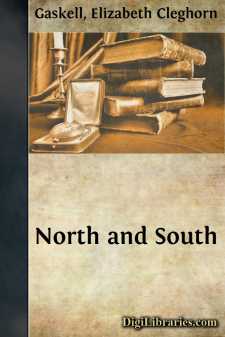Categories
- Antiques & Collectibles 13
- Architecture 36
- Art 48
- Bibles 22
- Biography & Autobiography 813
- Body, Mind & Spirit 142
- Business & Economics 28
- Children's Books 14
- Children's Fiction 11
- Computers 4
- Cooking 94
- Crafts & Hobbies 4
- Drama 346
- Education 46
- Family & Relationships 57
- Fiction 11829
- Games 19
- Gardening 17
- Health & Fitness 34
- History 1377
- House & Home 1
- Humor 147
- Juvenile Fiction 1873
- Juvenile Nonfiction 202
- Language Arts & Disciplines 88
- Law 16
- Literary Collections 686
- Literary Criticism 179
- Mathematics 13
- Medical 41
- Music 40
- Nature 179
- Non-Classifiable 1768
- Performing Arts 7
- Periodicals 1453
- Philosophy 64
- Photography 2
- Poetry 896
- Political Science 203
- Psychology 42
- Reference 154
- Religion 513
- Science 126
- Self-Help 84
- Social Science 81
- Sports & Recreation 34
- Study Aids 3
- Technology & Engineering 59
- Transportation 23
- Travel 463
- True Crime 29
Sylvia's Lovers - Complete
Categories:
Description:
Excerpt
MONKSHAVEN
On the north-eastern shores of England there is a town called Monkshaven, containing at the present day about fifteen thousand inhabitants. There were, however, but half the number at the end of the last century, and it was at that period that the events narrated in the following pages occurred.
Monkshaven was a name not unknown in the history of England, and traditions of its having been the landing-place of a throneless queen were current in the town. At that time there had been a fortified castle on the heights above it, the site of which was now occupied by a deserted manor-house; and at an even earlier date than the arrival of the queen and coeval with the most ancient remains of the castle, a great monastery had stood on those cliffs, overlooking the vast ocean that blended with the distant sky. Monkshaven itself was built by the side of the Dee, just where the river falls into the German Ocean. The principal street of the town ran parallel to the stream, and smaller lanes branched out of this, and straggled up the sides of the steep hill, between which and the river the houses were pent in. There was a bridge across the Dee, and consequently a Bridge Street running at right angles to the High Street; and on the south side of the stream there were a few houses of more pretension, around which lay gardens and fields. It was on this side of the town that the local aristocracy lived. And who were the great people of this small town? Not the younger branches of the county families that held hereditary state in their manor-houses on the wild bleak moors, that shut in Monkshaven almost as effectually on the land side as ever the waters did on the sea-board. No; these old families kept aloof from the unsavoury yet adventurous trade which brought wealth to generation after generation of certain families in Monkshaven.
The magnates of Monkshaven were those who had the largest number of ships engaged in the whaling-trade. Something like the following was the course of life with a Monkshaven lad of this class:—He was apprenticed as a sailor to one of the great ship-owners—to his own father, possibly—along with twenty other boys, or, it might be, even more. During the summer months he and his fellow apprentices made voyages to the Greenland seas, returning with their cargoes in the early autumn; and employing the winter months in watching the preparation of the oil from the blubber in the melting-sheds, and learning navigation from some quaint but experienced teacher, half schoolmaster, half sailor, who seasoned his instructions by stirring narrations of the wild adventures of his youth. The house of the ship-owner to whom he was apprenticed was his home and that of his companions during the idle season between October and March. The domestic position of these boys varied according to the premium paid; some took rank with the sons of the family, others were considered as little better than servants. Yet once on board an equality prevailed, in which, if any claimed superiority, it was the bravest and brightest....












